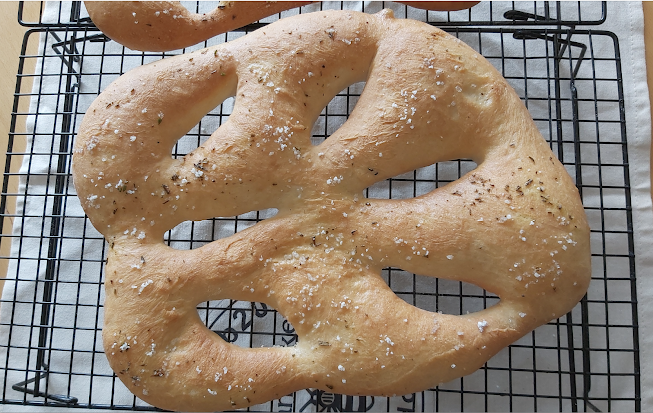Fougasse from Provence
Welcome to another step-by-step recipe from BreadClub20. Why not drop by our main Facebook page by clicking here.... If you like what you see and enjoy the recipe, we hope you go on to join us by 'Liking' and 'Subscribing'.
Fougasse is from Provence. That wonderful region of blue skies, lavender fields and the tantalising proximity of the Mediterranean.
The Romans brought fougasse to Provence as early as the 2nd Century B.C. when it was known as panis focacius, a flatbread baked in the ashes of the hearth.
Throughout the Roman Empire and beyond, fougasse could be found: as focaccia in Italy, hogaza in Spain, fogassa in Catalonia, fugàssa in Liguria, pogača in the Balkans, pogačsa in Hungary; and a sweetened version in Portugal and South America, the fogaça.
The bread has even come down through history as a saying, an aphorism in French, "il ne faut pas brûler la fougasse". "Do not burn the fougasse" - the time it takes for a stove to reach the right temperature to be loaded with loaves for baking.
Although my version is plain, only topped with extra virgin olive oil and grey sea salt from the Guerande, far to the north in Normandy, fougasse, can be topped with anchovies, olives, cheese or garlic. It can contain fresh herbs....the choice is yours.
INGREDIENTS
500 gms of strong white bread flour
350 mls of filtered water at room temperature
30 mls olive oil
10 gms of sea salt
7 gms instant yeast
For the glazing
Olive oil (herb-infused if you wish - I add a little chopped fresh rosemary)
Sea salt crystals
METHOD
Mixing by hand
If you're mixing by hand or using a stand mixer, add the salt to the flour and mix thoroughly. Then add the remainder of the dry ingredients (except the yeast). Slowly add the oil and then the yeast until you have a sticky mix. Turn the mix out onto a floured board and knead until you have a silky and pliable dough. (There are 'Help' videos and articles in the 'Useful Web and YouTube links' on the lefthand side of this page). Place the dough in an oiled bowl and cover. Leave for an hour somewhere warm until the dough has doubled in size. Then proceed to the next stage.








Comments
Post a Comment